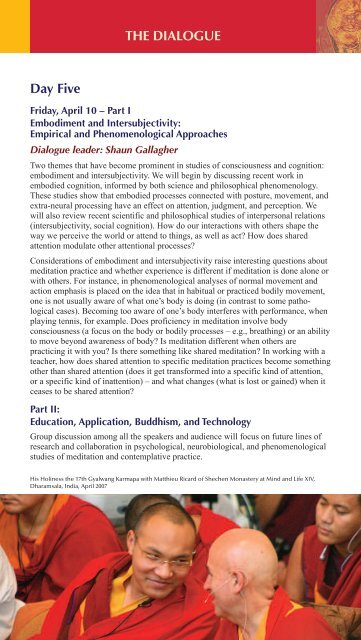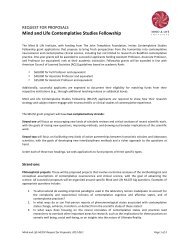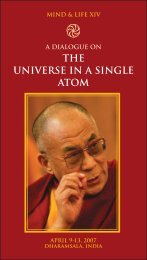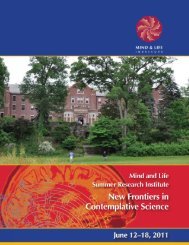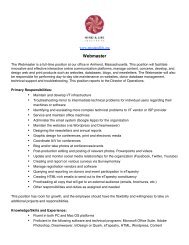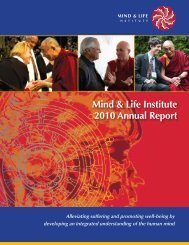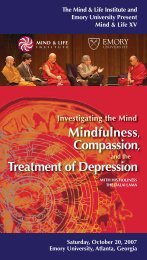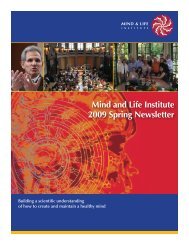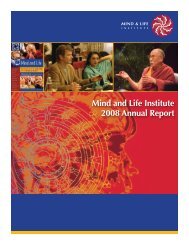to view the brochure from the conference (PDF). - Mind & Life Institute
to view the brochure from the conference (PDF). - Mind & Life Institute
to view the brochure from the conference (PDF). - Mind & Life Institute
You also want an ePaper? Increase the reach of your titles
YUMPU automatically turns print PDFs into web optimized ePapers that Google loves.
THE DIALOGUE<br />
Day Five<br />
Friday, April 10 – Part I<br />
Embodiment and Intersubjectivity:<br />
Empirical and Phenomenological Approaches<br />
Dialogue leader: Shaun Gallagher<br />
Two <strong>the</strong>mes that have become prominent in studies of consciousness and cognition:<br />
embodiment and intersubjectivity. We will begin by discussing recent work in<br />
embodied cognition, informed by both science and philosophical phenomenology.<br />
These studies show that embodied processes connected with posture, movement, and<br />
extra-neural processing have an effect on attention, judgment, and perception. We<br />
will also re<strong>view</strong> recent scientific and philosophical studies of interpersonal relations<br />
(intersubjectivity, social cognition). How do our interactions with o<strong>the</strong>rs shape <strong>the</strong><br />
way we perceive <strong>the</strong> world or attend <strong>to</strong> things, as well as act How does shared<br />
attention modulate o<strong>the</strong>r attentional processes<br />
Considerations of embodiment and intersubjectivity raise interesting questions about<br />
meditation practice and whe<strong>the</strong>r experience is different if meditation is done alone or<br />
with o<strong>the</strong>rs. For instance, in phenomenological analyses of normal movement and<br />
action emphasis is placed on <strong>the</strong> idea that in habitual or practiced bodily movement,<br />
one is not usually aware of what one’s body is doing (in contrast <strong>to</strong> some pathological<br />
cases). Becoming <strong>to</strong>o aware of one’s body interferes with performance, when<br />
playing tennis, for example. Does proficiency in meditation involve body<br />
consciousness (a focus on <strong>the</strong> body or bodily processes – e.g., breathing) or an ability<br />
<strong>to</strong> move beyond awareness of body Is meditation different when o<strong>the</strong>rs are<br />
practicing it with you Is <strong>the</strong>re something like shared meditation In working with a<br />
teacher, how does shared attention <strong>to</strong> specific meditation practices become something<br />
o<strong>the</strong>r than shared attention (does it get transformed in<strong>to</strong> a specific kind of attention,<br />
or a specific kind of inattention) – and what changes (what is lost or gained) when it<br />
ceases <strong>to</strong> be shared attention<br />
Part II:<br />
Education, Application, Buddhism, and Technology<br />
Group discussion among all <strong>the</strong> speakers and audience will focus on future lines of<br />
research and collaboration in psychological, neurobiological, and phenomenological<br />
studies of meditation and contemplative practice.<br />
His Holiness <strong>the</strong> 17th Gyalwang Karmapa with Matthieu Ricard of Shechen Monastery at <strong>Mind</strong> and <strong>Life</strong> XIV,<br />
Dharamsala, India, April 2007


